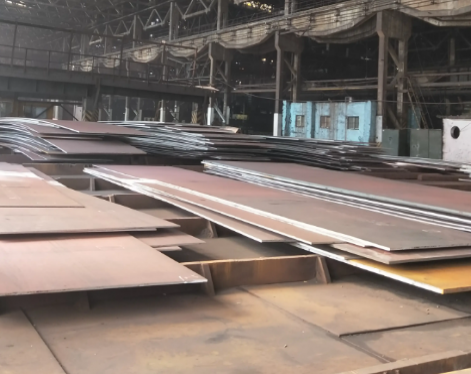Carbon steel pipes are made of steel ingots or solid round steel through perforation into capillary tubes, and then made by hot rolling, cold rolling or cold drawing. According to the production method, carbon steel pipes can be divided into two categories: seamless pipes and welded steel pipes. Non-metallic inclusions are non-metallic substances contained in carbon steel pipes that are different from those of the base metal. It destroys the continuity and isotropy properties of the metal matrix.
1. According to the source of non-metallic inclusions, it can be divided into endogenous inclusions, foreign inclusions and a mixture of the two.
(1) Endogenous inclusions are formed by various physical and chemical reactions during deoxidation and crystallization, mainly the reaction products between oxygen, sulfur, nitrogen and other components in the steel pipe. The characteristic of endogenous inclusions is that the particles are small and evenly distributed in the steel, which is closely related to the deoxidation method and chemical composition.
(2) Foreign inclusions refer to foreign substances such as refractory materials, slag, ladle slag and mold slag mixed into the steel pipe. The foreign inclusions are characterized by large size, complex composition structure, irregular distribution, and great chance. The secondary oxidation of molten steel by air will form foreign inclusions.
(3) In the production process of steel pipes, foreign inclusions and endogenous inclusions often form a mixture of the two, which has the common characteristics of both, making it difficult for inspectors to distinguish their sources. Non-metallic inclusions can be divided into three types according to particle size: submicroscopic, microscopic and large particle inclusions, and the particle sizes are <1 μm, 1~100 μm and >100 μm, respectively. Large particle inclusions often appear in the precipitated grain area and subcutaneous position of the steel ingot.

2. According to the nature of non-metallic inclusions, they can be divided into plastic inclusions and brittle inclusions.
Plastic inclusions deform along with the steel pipe during hot working. The brittle inclusions are broken with the change of hot-worked metals. When the melting point of non-metallic inclusions is particularly high, they will exist in a solid form in the steel pipe for a lifetime. This kind of non-metallic inclusions will neither deform nor break during thermal processing, and maintain their original shape. For inclusions with a very low melting point, they should be excluded from the final crystallization mother liquor. At this time, most of them are precipitated along the primary austenite grain boundary in the form of a network film.
Non-metallic inclusions in steel pipes have varying degrees of influence on the strength, elongation, toughness and fatigue strength of steel. Large particle inclusions that seriously endanger the properties of the steel are not allowed in the steel. To ensure the cleanliness of the tapping and casting system, the use of argon blowing, slag washing, powder spraying, vacuum treatment and other out-of-furnace refining measures and protective casting measures can reduce non-metallic inclusions in steel.
1. According to the source of non-metallic inclusions, it can be divided into endogenous inclusions, foreign inclusions and a mixture of the two.
(1) Endogenous inclusions are formed by various physical and chemical reactions during deoxidation and crystallization, mainly the reaction products between oxygen, sulfur, nitrogen and other components in the steel pipe. The characteristic of endogenous inclusions is that the particles are small and evenly distributed in the steel, which is closely related to the deoxidation method and chemical composition.
(2) Foreign inclusions refer to foreign substances such as refractory materials, slag, ladle slag and mold slag mixed into the steel pipe. The foreign inclusions are characterized by large size, complex composition structure, irregular distribution, and great chance. The secondary oxidation of molten steel by air will form foreign inclusions.
(3) In the production process of steel pipes, foreign inclusions and endogenous inclusions often form a mixture of the two, which has the common characteristics of both, making it difficult for inspectors to distinguish their sources. Non-metallic inclusions can be divided into three types according to particle size: submicroscopic, microscopic and large particle inclusions, and the particle sizes are <1 μm, 1~100 μm and >100 μm, respectively. Large particle inclusions often appear in the precipitated grain area and subcutaneous position of the steel ingot.

2. According to the nature of non-metallic inclusions, they can be divided into plastic inclusions and brittle inclusions.
Plastic inclusions deform along with the steel pipe during hot working. The brittle inclusions are broken with the change of hot-worked metals. When the melting point of non-metallic inclusions is particularly high, they will exist in a solid form in the steel pipe for a lifetime. This kind of non-metallic inclusions will neither deform nor break during thermal processing, and maintain their original shape. For inclusions with a very low melting point, they should be excluded from the final crystallization mother liquor. At this time, most of them are precipitated along the primary austenite grain boundary in the form of a network film.
Non-metallic inclusions in steel pipes have varying degrees of influence on the strength, elongation, toughness and fatigue strength of steel. Large particle inclusions that seriously endanger the properties of the steel are not allowed in the steel. To ensure the cleanliness of the tapping and casting system, the use of argon blowing, slag washing, powder spraying, vacuum treatment and other out-of-furnace refining measures and protective casting measures can reduce non-metallic inclusions in steel.









